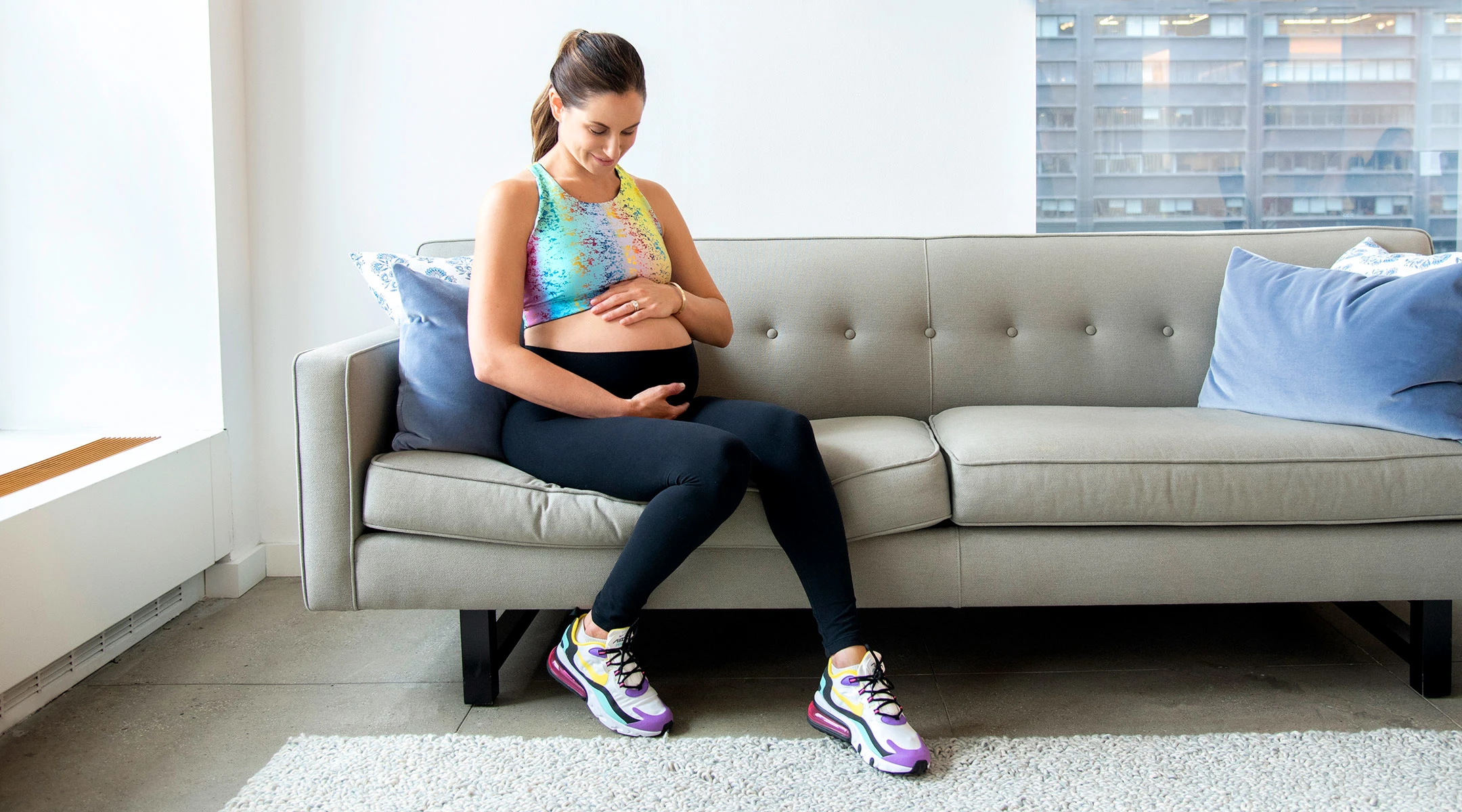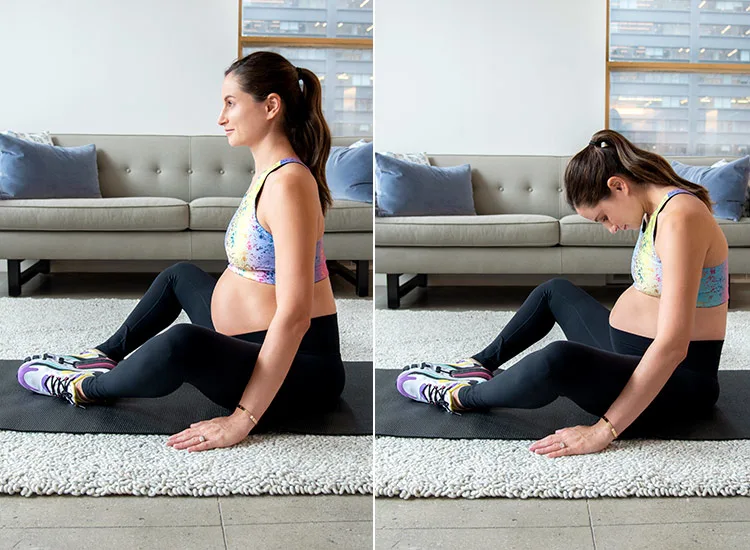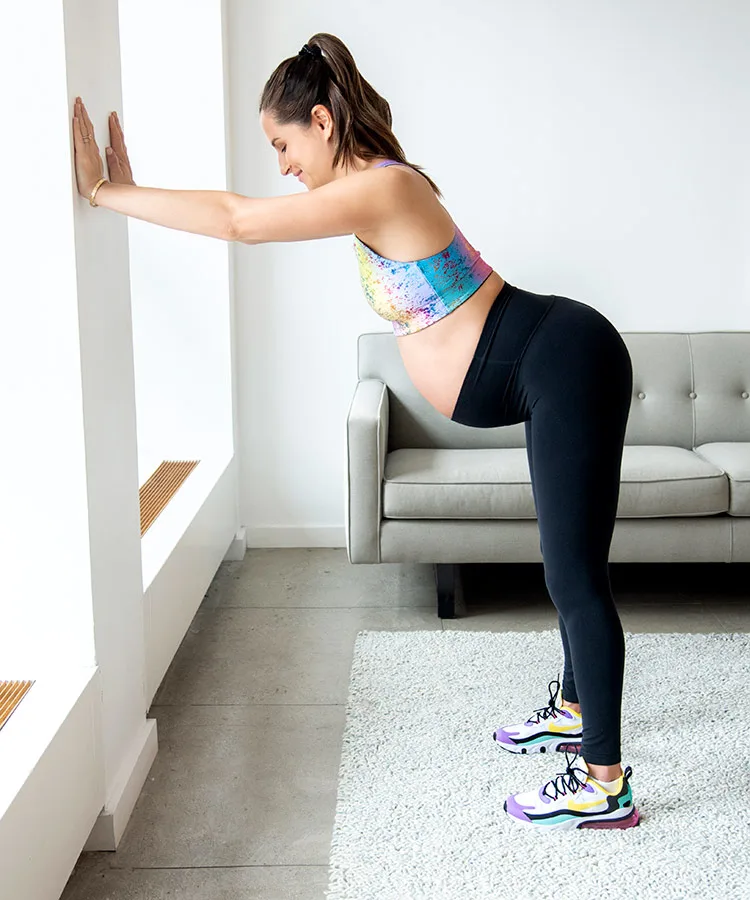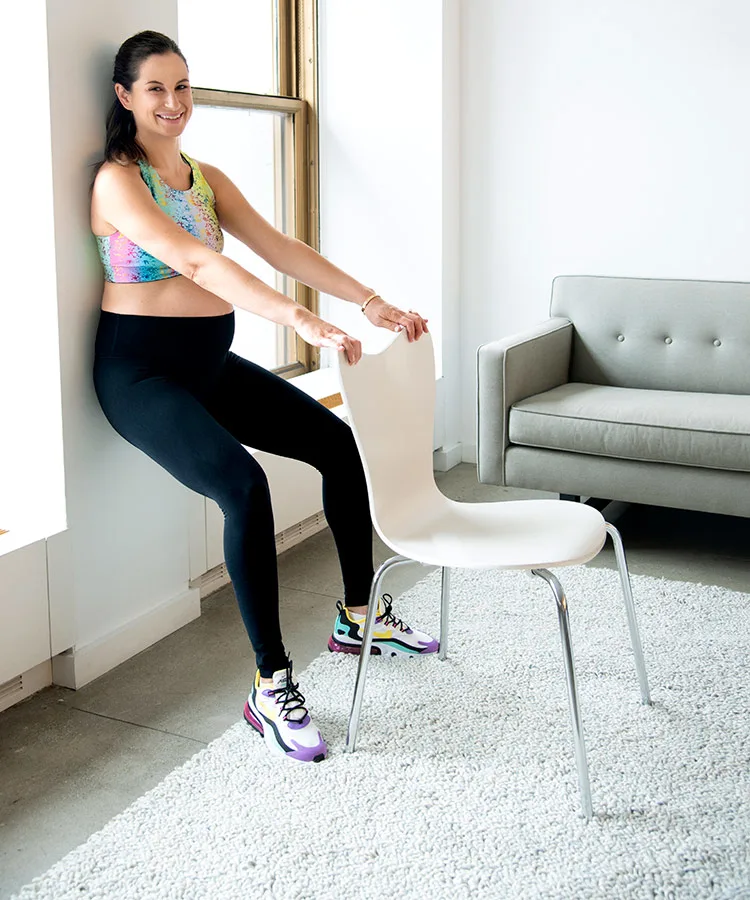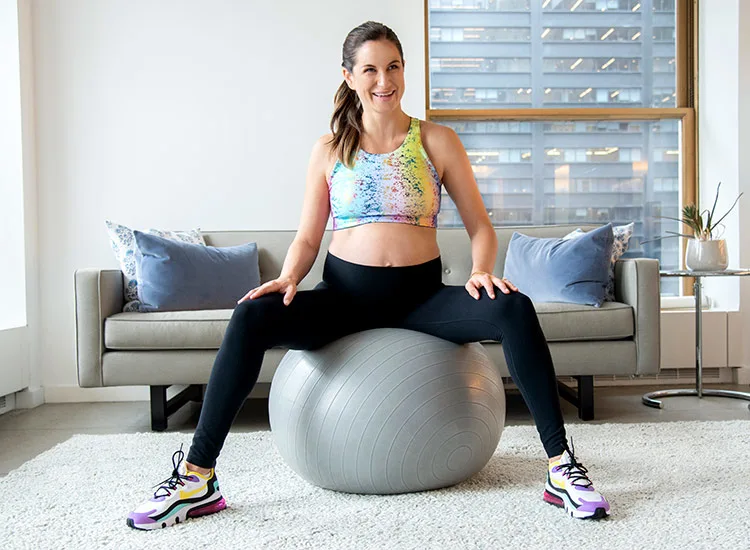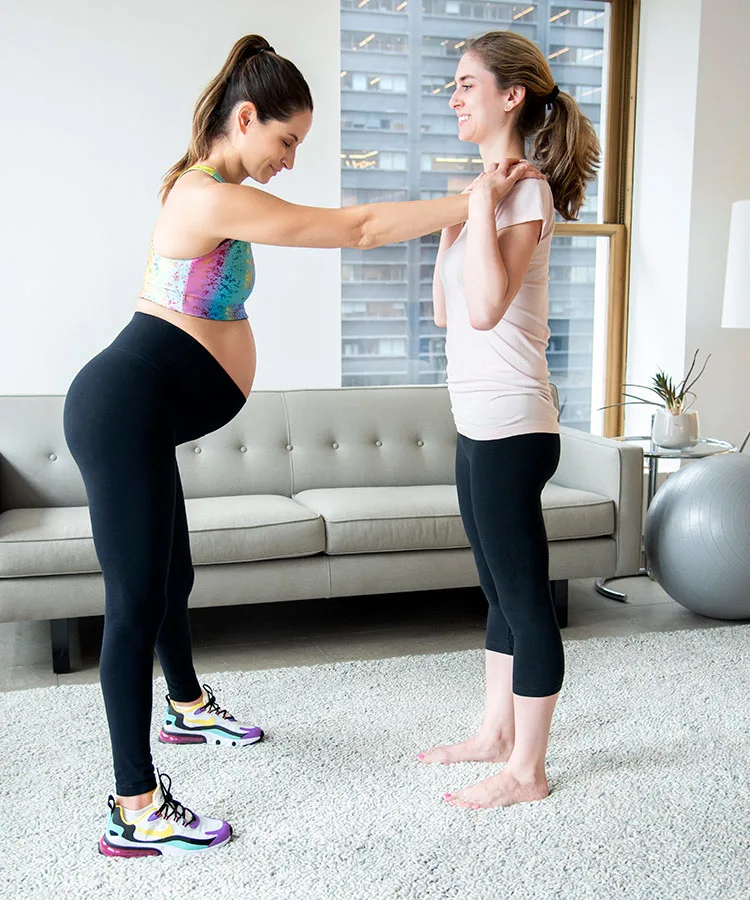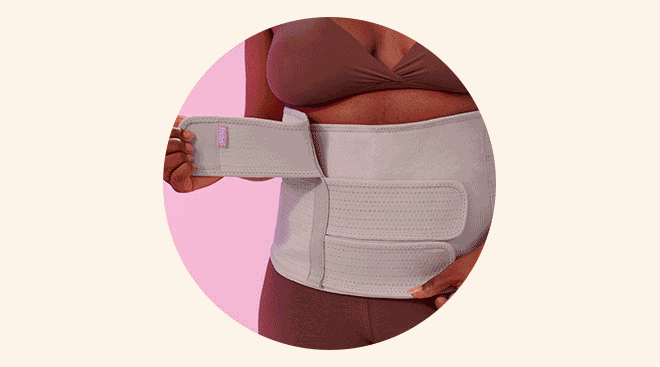7 Exercises to Help Induce Labor, According to Experts (and Moms Who’ve Tried Them)
At 39 weeks, you’ve reached what’s officially considered a full-term pregnancy—and you’re probably more than ready to meet baby. But even with your due date around the corner, there’s really no telling when your little one will decide to make their grand entrance. Which is why many moms-to-be—eager to put pregnancy behind them—try to take things into their own hands and help move labor along. One tactic? Practicing certain exercises to induce labor.
But do these exercises really work? They can, experts say, but only if your body is actually ready for labor. For any kind of exercise to help start labor, the cervix needs to be ripe—soft and ready for dilation—explains Kathy Fray, a midwife and maternity consultant in Auckland, New Zealand. In other words, if your body isn’t starting to gear up for labor on its own, doing squats and forward bends aren’t going to jumpstart contractions. “However, if your cervix is beautifully ripe and soft and stretchy, then exercises might tip you into commencing contractions,” Fray adds. Read on to learn some exercises you can try out to help induce labor naturally—and which ones to avoid completely.
- Some exercises to try are supporting squats, gently bouncing on an exercise ball, slow dancing and butterfly pose. Avoid sharp bouncing and twisting movements, as well as inversions.
- Avoid exercises to induce labor that elevate your heart rate or cause stress on the body.
- If you’re not yet at term, have a high risk for preterm labor or have a certain prenatal condition, your provider may advise against trying exercises to induce labor.
- Always consult your provider before starting exercises to help bring on labor.
While you may want baby to come (and stat!), you don’t want baby to come too soon. According to the American College of Obstetricians and Gynecologists (ACOG), the risk of adverse outcomes is lowest if baby is born between 39 and 41 weeks gestation.
It’s always a good idea to check with your doctor first before trying out any exercises to help bring on labor. But generally speaking, unless you’re dealing with a complicated pregnancy, gentle exercise and breathing techniques shouldn’t create problems or send you into preterm labor if you try some moves out ahead of time. In fact, you may want to even test out some techniques while you’re experiencing Braxton Hicks contractions, says Jessica Jennings, MS, founder of Ma Yoga for Pregnancy, Motherhood & Beyond in Los Angeles. “Your body is practicing,” she explains. “It’s a wonderful time for you to practice too.”
Jennings suggests finding a breathing rhythm during Braxton Hicks contractions while stretching back through your hips and swaying. If you get energy flowing through your hips as the contractions build up, she says, you’ll have the inner resources to pull through once the real labor contractions set in.
Still, even in a healthy pregnancy, exercises that help induce labor might not feel comfortable. Always listen to your body and stop or take breaks as needed.
Some exercises may encourage labor to start, while others can help move early labor along once those initial contractions have started. Either way, “it’s about focusing on exercises that will calm your central nervous system,” says Melissa Green, a labor support doula and prenatal exercise specialist in New York City. “If you’re trying to induce labor, don’t elevate your heart rate or cause stress on the body. This can prevent labor, or even reverse it.” The reason: When your heart rate goes up, your body reacts with a fight-or-flight response. And to give birth, you obviously want openness in your pelvic area, not Spanx-like tightness.
In addition to finding a slow, rhythmic breath, start moving in a way that grounds you and baby, Green adds. Exercises that relax the pelvic floor as well as open up the hips are ideal in helping move labor to the next phase. It’s also good to simply move about, especially when you’re trying to coax early labor into the next phase. “Lying flat on the bed doesn’t help mild latent labor establish into strong active labor,” Fray says. “Women need to mobilize. Being upright increases the pressure of the fetal head on the cervix, making the contractions more effective.”
This might also be why some women cite walking as a good exercise to induce labor. “The day I had my daughter, my husband and I took a 3 mile walk. We came home and real contractions kicked in. She was born five hours later,” says Mrs.Syntax, a community member on The Bump. “I had a really short and really easy delivery, and I think that the walking helped get her into a good position. However, it probably didn’t kick-start labor because I had been having a bloody show the night before, so everything was already in progress.”
Ready to get moving? Here are six possible exercises to help bring on labor.
Engaged breathing
When you breathe normally, you generally contract the abdominals on the exhale—but if you’re trying to induce labor, you want to engage your core and diaphragm as you inhale through the nose, and “try to hug baby with your abdominal muscles,” Green says. Take a moment to hold your breath, then exhale slowly through the mouth. You should feel relaxed on the exhale, imagining baby pushing down. Practice breathing like this until you can feel the pelvic floor muscles relax. This style of breathing can be done on an exercise ball, in child’s pose and in a supported squat. The Bump community member nosoup4u says prenatal yoga taught her about engaged breathing and how to really relax her body: “It helped me when labor got tough. I didn’t practice it exactly how we did in class, but being able to focus on breathing and vocalization came in handy.”
In Ayurveda (yoga’s sister science), this type of grounding breathing is associated with apana vayu, a life force that flows downward. “A long, full exhale brings our energy down out of your head into the lower body,” Jennings says. “It prepares the body for birth in so many ways.”
Butterfly pose
Doing certain prenatal yoga poses to induce labor, like butterfly pose, can be particularly helpful as your body transitions to the main event. Sit on the floor with knees wide and the soles of your feet together. You can place your hands under your knees for support. As you inhale, sit up tall so your lower back has a natural curve (like Cow Pose) and expand your chest forward and up. As you exhale, drop your chin down, lean back and round your back (like Cat Pose). Repeat this move five to 10 times, or as long as it feels good. “Both of these movements are important for pushing,” Jennings says. “When you find the natural curve of the lower back, you can access more power as you bear down.”
Supported forward bend
Find something sturdy that you can hold on to, like a wall, kitchen counter or stair banister. Place your legs parallel to each other, hip-width apart. Hold on to your support, bend your knees and stretch your hips back, pressing the tops of your thighs back as well. “Stick your butt out to make space in the pelvis,” Jennings says. “That’s where baby needs the most space to make their exit.” Do this for as long as it feels good, moving your hips side to side, taking long, deep breaths as you lengthen your spine and expand the back of your pelvis.
Supported squats
Supported squats help strengthen the glutes and legs, stretch the pelvic floor and encourage baby to move down. Stretching the pelvic floor helps your body relax, says Green, who recommends spending up to five minutes a day doing squats once baby is in the head down position. (Don’t worry, you don’t have to set your stopwatch—you can break up the five minutes into several intervals throughout the day.) “The full squat position (called malasana in yoga) helps baby engage deeper into the pelvis,” she says.
To start, put your back against a wall. (Consider placing an exercise ball between your back and the wall, which you can lean against to relieve pressure from the lower back.) Place your feet about shoulder-width apart, with your toes pointing out slightly. Bend your knees and descend as low as you’re comfortable, exhaling on the way down. While working on these squats to induce labor, keep your knees pointing out as you slowly return to starting position on the inhale.
Exercise ball bounce
This exercise uses a gym ball to induce labor and requires you to gently bounce while sitting on it. This not only encourages baby to move down (and in turn assists with cervix dilation), but it can also soothe baby, Green says. Sit on the exercise ball, with your legs wide apart, and move your hips up and down. The movement encourages the pelvic floor to contract and relax naturally. Gentle bouncing also allows the spine to decompress, making a little more space between the vertebrae, which can relieve tension in the lower back. Bounce for a few minutes throughout the day. “When I was in labor with my daughter, [an exercise ball] helped tremendously with the back labor I was going through,” adds mrsnicolew, a community member on The Bump.
Slow dance
If you want to help move early labor along, this could be a good exercise to induce active labor. Place your arms around the neck of your partner or labor support person and let yourself lean on them and relax. Sway your hips side to side. (This is a great time to fire up that playlist for labor and delivery!) Swaying the hips invites the open feeling you want in your pelvis, Jennings says. This simple movement can help you find a natural rhythm and support the downward flow of energy that you want throughout birth. What’s more, if you’re doing this move with your partner, connecting with someone you love releases oxytocin, a natural hormone that’s said to help you stay calm and better cope with pain, as well as stimulate contractions.
Pelvic tilts
Pelvic tilts won’t naturally induce labor, but they can get baby in an optimal position for birth. They can relieve pelvic discomfort, Ross notes. To do this exercise, lie on your back on the floor or another surface. Have your feet flat on the floor with your knees bent. From this position, tilt your pelvis up, tightening your lower abdominal muscles and pressing your back into the floor as you do so. Hold the contraction for a few seconds before releasing and repeating. While pelvic tilts can be beneficial as you approach labor, Ross notes they’re a good exercise to do all throughout pregnancy. They can strengthen abdominal muscles, which can prove beneficial during childbirth.
“Twisting movements should be avoided later in pregnancy, as they may cause shearing or abruption of the placenta,” says Anate A. Brauer, MD, an ob-gyn and reproductive endocrinologist at RMA of New York. Purdon also advises against doing head or shoulder stands. After all, you want baby to move downward toward the birth canal (head first), so steering clear of exercises that could inhibit that is a given. Moreover, you’ll want to follow the standard rules of exercising during pregnancy and keep away from contact sports, anything with an increased risk of falling and overly strenuous exercises that deplete your energy.
If you’re not yet at term, have an increased risk for preterm labor or have a condition such as placenta previa, preeclampsia or low amniotic fluid, your provider may recommend avoiding certain exercises to induce labor naturally, says Sherry Ross, MD, an ob-gyn and women’s sexual health expert. In fact, they may want to schedule you for a medical induction, adds Mélie Purdon, a yoga instructor and prenatal expert at YogaRenew Teacher Training.
Ross also says that you’ll want to stop exercising and reach out to your doctor if you experience any of the following:
- Vaginal bleeding
- Dizziness or feeling faint
- Increased and unusual shortness of breath
- Headaches
- Chest pain
- Unusual muscle weakness
- Calf pain and swelling
- Consistent and painful uterine contractions
- Decreased fetal movement
- Leaking or gushing fluid from the vagina
Frequently Asked Questions
Does bouncing on a ball induce labor?
As Green notes, gently bouncing on a gym ball can help baby move down the pelvis, but, again, it likely won’t induce labor unless other aspects of the birthing process are also already in play.
Does curb walking help labor start?
While it’s not a guarantee for starting labor, curb walking—which involves walking with one foot up on the curb and the other on the street—can help baby move lower in the pelvis and get properly positioned for birth.
Will swimming induce labor?
Like all other exercises, experts say swimming is unlikely to induce labor unless your body has already started its preparations to go into labor.
Are there sex positions to induce labor?
According to Cleveland Clinic, having sex may help induce labor because it releases oxytocin, which can help start contractions. Plus, semen contains prostaglandins, which may help the cervix ripen.
If you’re approaching the end of your pregnancy, it’s natural to want to speed things along—especially when your due date creeps up on you. In general, for healthy, uncomplicated pregnancies, trying some simple exercises to induce labor is perfectly safe. And even if it doesn’t move the needle, at the very least, it can help you feel like you’re doing something productive. “Exercise during pregnancy can help prepare you for labor and childbirth,” reiterates Ross. “There’s no question that [for most people], the benefits of exercising during pregnancy outweigh the risks.”
Please note: The Bump and the materials and information it contains are not intended to, and do not constitute, medical or other health advice or diagnosis and should not be used as such. You should always consult with a qualified physician or health professional about your specific circumstances.
Plus, more from The Bump:
Anate A. Brauer, MD, FACOG, is an ob-gyn and reproductive endocrinologist at RMA of New York. She earned her medical degree from the George Washington University School of Medicine and completed her residency at New York Presbyterian Hospital-Weill Cornell Medical Center.
Kathy Fray, is a midwife and maternity consultant in Auckland, New Zealand, with over a decade of experience helping to birth babies. She is also the author of several parenting books, including Oh Baby: Birth, Babies & Motherhood Uncensored and Oh Grow Up: Toddlers to Preteens Decoded, and founder of the International Integrated Maternity Healthcare Organization.
Melissa Green is a labor support doula and postpartum corrective exercise specialist, a E-RYT and YACEP certified yoga teacher. She is also the founder of Just like Om, a former yoga and pilates studio in New York City.
Jessica Jennings, MS, ERYT, RPYT, is a certified yoga teacher and the founder of Ma Yoga for Pregnancy, Motherhood & Beyond, a yoga center in Los Angeles that offers prenatal yoga and mom and baby yoga classes, as well as online prenatal yoga and birth prep classes.
Mélie Purdon, is a yoga instructor and prenatal expert at YogaRenew Teacher Training. She completed her 200- and 300-hour yoga teacher training with the Hudson Yoga Project and earned her 85-hour prenatal yoga certification from the Prenatal Yoga Center in New York City.
Sherry Ross, MD, is an ob-gyn, women’s sexual health expert and author of She-ology: The Definitive Guide to Women’s Intimate Health. Period. and She-ology, The She-quel: Let’s Continue the Conversation. She earned her medical degree from New York Medical College.
American College of Obstetricians and Gynecologists, [Definition of Term Pregnancy](https://www.acog.org/clinical/clinical-guidance/committee-opinion/articles/2013/11/definition-of-term-pregnancy, November 2013
American College of Obstetricians and Gynecologists, Exercise During Pregnancy, March 2022
Cleveland Clinic, Is There Any Guaranteed Way To Induce Labor?, April 2024
BMC Complementary Medicine and Therapies, Biophysical effects, safety and efficacy of raspberry leaf use in pregnancy: a systematic integrative review, February 2021
Real Parent Perspectives:
Learn how we ensure the accuracy of our content through our editorial and medical review process.
Navigate forward to interact with the calendar and select a date. Press the question mark key to get the keyboard shortcuts for changing dates.
































